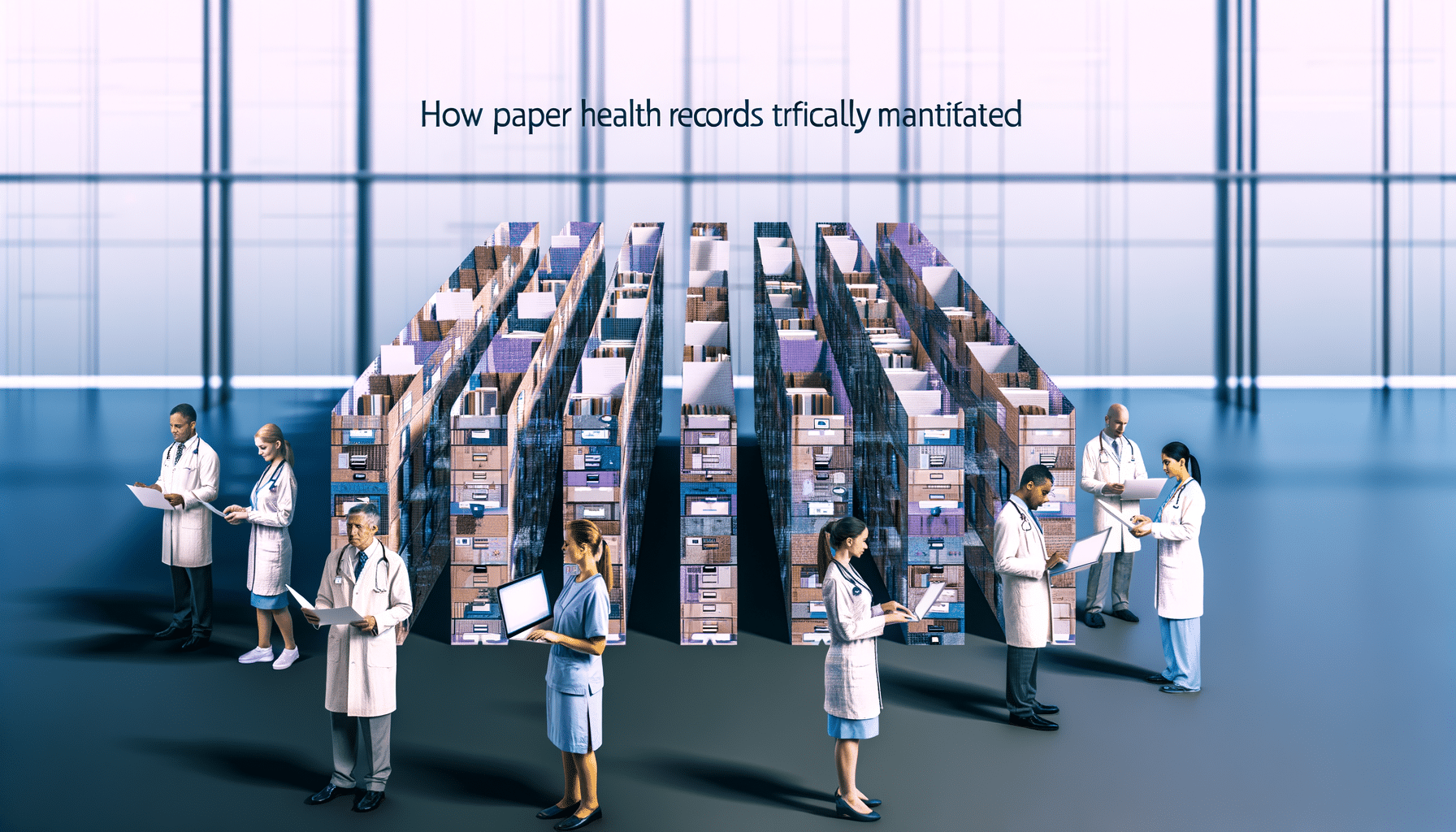Transforming the Chaos: From Traditional Medical Records to Modern Solutions
In a world rapidly embracing digital trends, the existence of paper health records may seem like remnants of an era long gone. Yet, the reality stands: traditional medical records, meticulously crafted over the years, continue to loom large, posing unique challenges and unique opportunities for transformation. Despite advancements in healthcare IT, managing paper records securely remains a pivotal concern for professionals. Let’s dive into understanding how these paper health records are typically maintained and how we can revolutionize the process for better compliance, security, and efficiency.
The Reality of Traditional Records in a Digital World
For many healthcare providers, paper records provide a tactile reassurance—a tangible history of patient care that digital files can’t quite replicate. But maintaining paper health records is no mean feat. In addition to housing a colossal volume of information, it involves dealing with the fragility of the paper itself, ensuring systems for physical storage, and managing the increasing demand for access to these records.
The process requires meticulous organization work. Typically, paper health records are maintained in expansive archives. These archives are expected to follow stringent organizational structures, categorized often by individual departments. They’re kept in sequence numbered filing systems and frequently referenced through unique identification numbers. This meticulous archiving ensures that records retrieved years later are as accessible and secure as they were on day one.
The Burden of Manual Access and Compliance
The manual retrieval and recording of these records demand attention that diverts focus away from core patient care. A simple request for information can turn into a time-consuming search through endless filing cabinets. Despite careful organization, human error remains an inherent risk. Ensuring compliance with regulations such as HIPAA becomes a juggling act, exacerbated by potential misplacement or unauthorized access to those fragile paper records.
Additionally, maintaining compliance is further complicated by the requirement to duplicate processes for auditing purposes, making the manual system prone to inconsistencies and inefficiencies.
The Digital Transition Opportunity
The solution lies in the technology of today combined with strategic innovation. Transitioning towards digital solutions like RecordsKeeper.AI can turn record management from a burdensome task into an opportunity for enhancement. With AI-powered automated categorization, a hybrid system can lead to seamless digital transitions while reducing dependency on the physical form.
Blockchain technology comes into play by ensuring the integrity of the records. It provides a tamper-proof, immutable ledger of all record accesses and modifications, which reassures both the patients and the regulators.
A More Secure and Efficient Future
- Automated Access and Retrieval: AI enhances the speed and accuracy of record retrieval, giving healthcare professionals more time to focus on patient care.
- Improved Compliance Management: AI scrutinizes records for compliance with industry standards, minimizing the risk of violations.
- Advanced Encryption and Security: Blockchain integration guarantees the security of records, enabling health sectors to build trust with their stakeholders.
- Policy Management: Data retention and deletion policies are enforced automatically, reducing the burden on administrative resources.
Taking the Leap
Despite the challenges of managing traditional paper health records, embracing technology is not only advantageous but essential. As someone deeply involved in the field of AI-driven backend processes, I’ve seen firsthand how efficiently the landscape can change with the adoption of smart systems. RecordsKeeper.AI isn’t just a tool—it’s a strategic advantage that transforms record-keeping into a realm of seamless, secure access and management.
The transition doesn’t mean eradicating historical paper records overnight but rather bridging the gap between traditional and digital with thoughtful innovation. The payoff? A compliant, secure, and more efficient healthcare system that can respond dynamically to the demands of modern practice.
Conclusion
The existence of paper health records may remain, but how they’re managed must transform. The fusion of AI and Blockchain through platforms like RecordsKeeper.AI heralds a new era for record management, where efficiency, security, and compliance go hand in hand. For Legal, Finance & Compliance heads and beyond, it’s time to seize the moment and redefine the narrative around record management—creating a healthcare system ready for the challenges and opportunities of the future.
To explore how RecordsKeeper.AI can streamline your record management process, feel free to reach out or follow my journey as we innovate for the future. Until next time, let’s keep moving forward.








